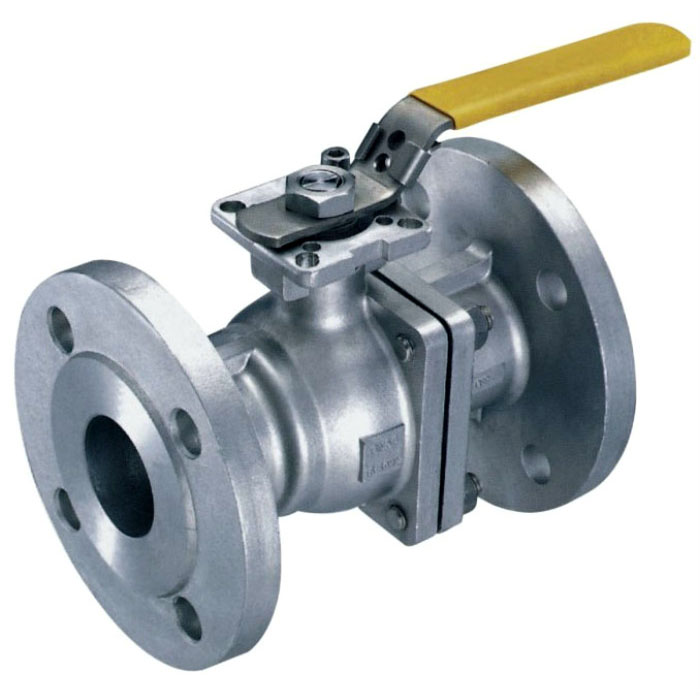Flanged ball valve stainless steel grade and performance analysis

In the design and selection of flanged ball valves, we will encounter different types of stainless steel based on various standards, catagory and grades. In order to make the correct proposal, we shall pay attention to the specific process medium, temperature, pressure, pressure bearing components, corrosion, cost and so on.
1. 304 stainless steel.
It is one of the austenitic stainless steels with a large application amount and the widest range of applications. It is suitable for the manufacture of deep-drawn parts and acid pipelines, containers, structural parts, various instrument bodies, etc. It can also manufacture non-magnetic and cryogenic equipment and component.
2. 304L stainless steel.
In order to solve the ultra-low carbon austenitic stainless steel developed by the precipitation of Cr23C6 which causes the 304 stainless steel to have severe intergranular corrosion under some conditions, the sensitized state has better resistance to intergranular corrosion than 304 stainless steel. In addition to the lower strength, other properties are the same as 321 stainless steel, mainly used for corrosion-resistant equipment and components that need to be solution treated after welding, and can be used to manufacture various types of instrument bodies.
3. 304H stainless steel.
The internal branch of 304 stainless steel has a carbon mass fraction of 0.04%-0.10%, and the high-temperature performance is better than 304 stainless steel.
4. 316 stainless steel.
Adding molybdenum to the 10Cr18Ni12 steel makes the steel have good resistance to reducing medium and pitting resistance. Corrosion resistance is superior to 304 stainless steel in seawater and various other media, mainly used for pitting resistant materials.
5. 316L stainless steel.
Ultra-low carbon steel with good resistance to sensitized intergranular corrosion, suitable for the manufacture of welded parts and equipment of thick section size, such as corrosion resistant materials in petrochemical equipment.
6. 316H stainless steel.
The internal branch of 316 stainless steel has a carbon mass fraction of 0.04%-0.10%, and the high-temperature performance is better than 316 stainless steel.
7. 317 stainless steel.
Pitting and creep resistance is superior to 316L stainless steel for the manufacture of petrochemical and organic acid resistant equipment.
8. 321 stainless steel.
It is titanium-stabilized austenitic stainless steel by adding titanium to improve intergranular corrosion resistance, and has good high temperature mechanical properties. It can be replaced by ultra-low carbon austenitic stainless steel. Except for special occasions such as high temperature or hydrogen corrosion resistance, it is not recommended for general use.
9. 347 stainless steel.
It is niobium-stabilized austenic stainless steel by adding niobium to improve resistance to intergranular corrosion. The corrosion resistance is the same as 321 stainless steel in corrosive media such as acid, alkali, salt, etc. With good welding performance, it can be used as corrosion resistant material and heat resistant material mainly used in thermal power and petrochemical fields, such as making containers, pipes, heat exchangers, shafts, furnace tubes in industrial furnaces, and furnace tube thermometers.
10. 904L stainless steel.
As a super austenitic stainless steel, it was invented by OUTOKUMPU, Finland, with a nickel mass fraction of 24% to 26%, a carbon mass fraction of less than 0.02%, and excellent corrosion resistance. It has good corrosion resistance in non-oxidizing acids such as sulfuric acid, acetic acid, formic acid and phosphoric acid, and has good resistance to crevice corrosion and stress corrosion. It is suitable for various concentrations of sulfuric acid below 70 °C. It is resistant to corrosion in acetic acid and mixed acid of formic acid and acetic acid at any concentration and at any temperature under normal pressure. The original standard ASMESB-625 is classified as a nickel-based alloy, and the new standard classifies it as stainless stee.
11, 440C stainless steel.
Martensitic stainless steel, the hardest in hardenable stainless steel and stainless steel, the hardness is HRC57. Mainly used for making nozzles, bearings, valve spools, valve seats, sleeves, valve stems, etc.
12, 17-4PH stainless steel.
Martensitic precipitation hardening stainless steel with hardness HRC44, high strength, hardness and corrosion resistance, can not be used for temperatures above 300 °C. It has good corrosion resistance to the atmosphere and diluted acid or salt. Its corrosion resistance is the same as that of 304 stainless steel and 430 stainless steel. It is used to manufacture offshore platforms, turbine blades, valve spools, seats, sleeves and valve stems. Wait.
In combination with versatility and cost, the conventional austenitic stainless steel selection sequence is 304-304L-316-316L-317-321-347-904L stainless steel. 317 is less used, 321 is not recommended, and 347 is used for high temperature corrosion resistance. The 904L is only the default material for some components of individual manufacturers. Generally, the 904L is not actively selected in the design.